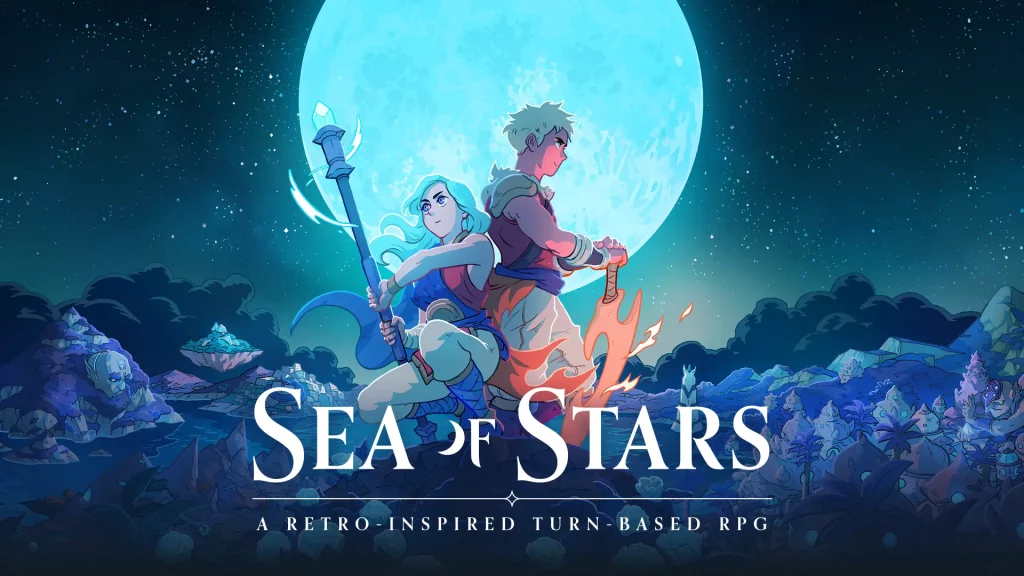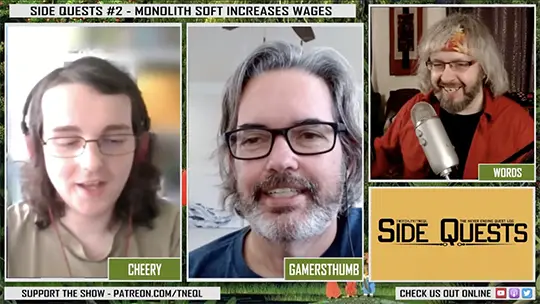Will you like Sea of Stars if you’re not that into jrpgs?
Video transcript:
Will you like Sea of Stars if you’re not into JPRGs? The game is heavily inspired by classic JPRGs like Chrono Trigger and Super Mario RPG, and it wears those inspirations on its sleeve. But I would say you can enjoy the game without having played those classics through the years. I know, because I never played them.
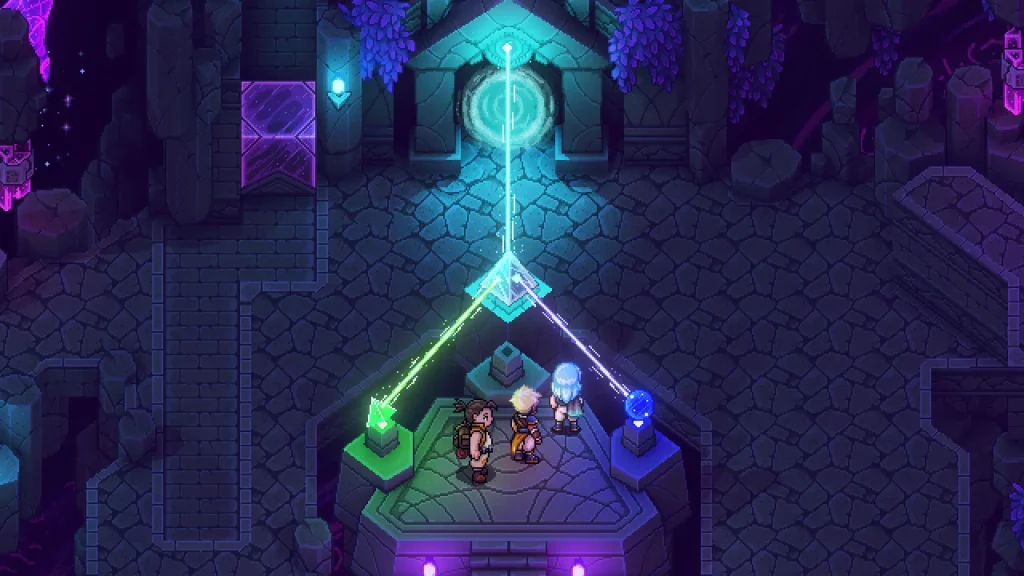
Sea of Stars is an indie RPG from Sabotage Studio, the makers of The Messenger, and it takes place in the same world but in a different timeline. I haven’t played The Messenger yet and I’m sure there are references, but nothing about this game made feel like I was being left out or that it was tied to something else.
This is a spoiler-free review, and I do show a little footage from the last third of the game but nothing that would spoil any surprises.
So what makes it a JRPG, and how is Sea of Stars different?
Gameplay
First and foremost, Sea of Stars is a turn-based RPG and gameplay consists primarily of combat and puzzle-solving, with a bit of exploring, fishing, and interacting with NPCs for good measure. There are a lot of puzzle sections, and at times it reminded me of classic 2D Zelda games. Although I would say the puzzles were a little challenging at times, but I rarely felt stumped for very long.
The turn-based combat had a unique twist: timing. Once you choose an action, you can press a button at the right time to add damage to your attacks, or reduce damage from incoming attacks. I loved this mechanic, because it not only kept me engaged with each individual action, but it also added a little randomness to the events.
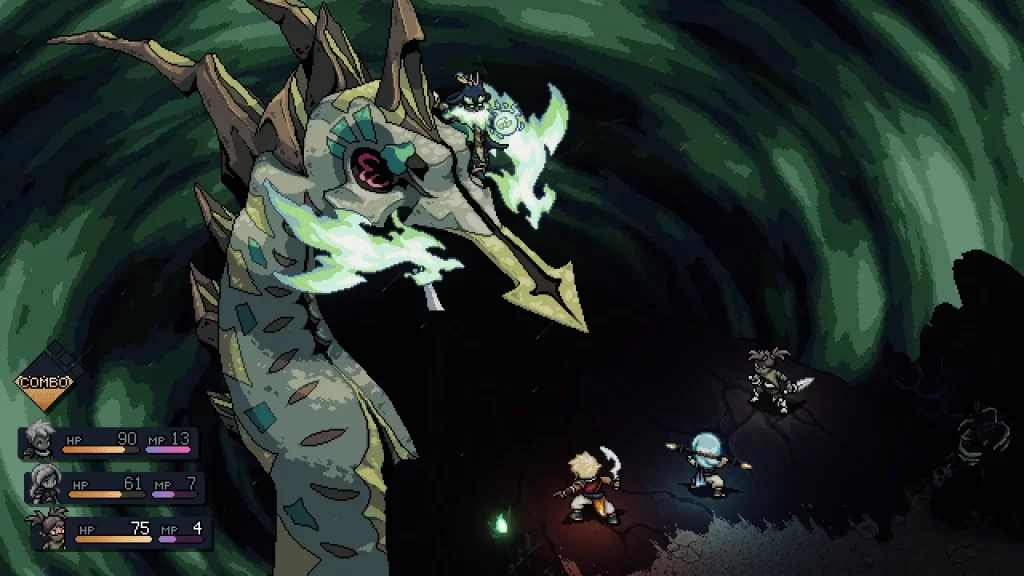
The game has another RPG staple: a kick-ass mini game. It’s called Wheels and it features a mechanical table with basically a slot machine and a pair of figurines. You combine symbols to attack, or build defenses, and different figurines have different abilities. There were times I just sat back and played Wheels for the hell of it. I’d actually love to have a mobile version of this and I feel like I could do an entire video on just Wheels strategies. Let me know in the comments if you’d like to see more about that part of the game.
But as much fun as Wheels is, this isn’t really a game about dawdling or messing around. The gameplay is tightly focused on moving your characters from one plot point to the next, which I really appreciate.
Tell me a story
There’s a lot of story here, and the game keeps you moving. You play as a pair of solstice warriors, which are rare people born on the solstice and granted special powers of the Sun and the Moon. Along with your buddy Garl, you embark on an adventure to help your headmaster and the older Solstice Warriors defeat a giant monster called a Dweller.
Garl, as strange as it might sound, is the heart and soul of the game. He’s loyal, stubbornly upbeat, and always overachieving. Compared to him, the main characters are a little bland, without much personality. Which is why the story didn’t really put its hooks into me right away, but man did those go in deep by the end of it.

Again, this is a spoiler-free review, but let me just say you’ll meet a strange cast of characters, roam all over the world, and do all this cool stuff… and that’s just the first 15-10 hours and that’s just the tip of the iceberg. This story has layers! Any time the game started to feel stagnant or I felt like I knew where the story was headed, the story blew my mind and my expectations went out the window.
One thing I really liked about a tighter, more linear story experience was that the game pretty much knows what level you’ll be in any area, so the enemies are tuned accordingly. I never felt under leveled or out of my league, nor did I feel overpowered or unchallenged. Which leads me to the combat.
Combat
Battles in Sea of Stars are turn-based, along with the timed button presses I mentioned earlier. There’s also a lock system, where enemies will have locks over their heads as they build up a special attack. The locks can only be broken with corresponding attacks, and you can choose to ignore the locks, or you may not have the resources to break them, but enemies with locks do more damage and receive less, so it’s usually best to break as many as you can.
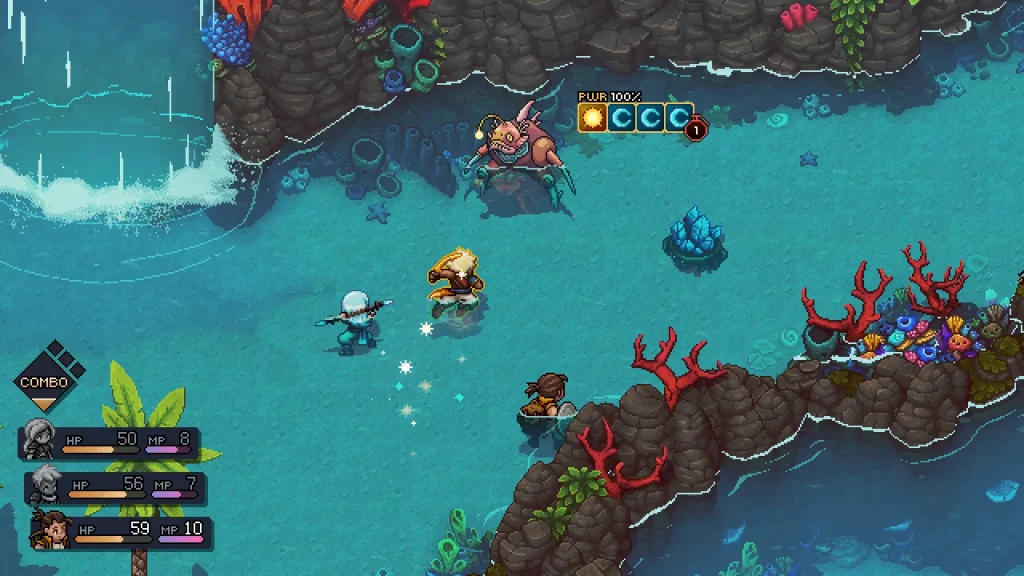
There are other things at play here, like using basic attacks to refill your mana or create little spares that allow you to add elemental damage to attacks that didn’t have them, but the important thing here is that the combat is thoughtful and strategic, but it’s also accessible. The game eases you into the concepts and layers, and by the end of it even a turn-based novice will feel like a seasoned pro.
And all player levels are welcome here. There are relics you can pick up and equip that can help ease the difficulty in varying degrees. There’s a relic that ensures you start each encounter at full health—this is huge and I’ll admit I had this one turned on, which just made battles less stressful and resource-dependent. One relic simply shoots up a flare when you get the timing right, giving you an additional visual cue that helps dial in your timing.
It’s a fantastic turn-based combat system, as good as any I’ve played. Now I’ll admit there haven’t been that many, but it’s still really good. I will say that by the end of the game, the combat was starting wear a little thin and I was kinda happy any time I could avoid it. One thing that never wore thin was the art.
Oh so pretty
There’s nothing new about pixelart, especially in this style of indie RPG. But Sea of Stars manages to look stunning, location after location. I love how they’re able to add depth to what is basically 2D art. There are no perspective lines, but everything still feels like a living world, and manages to look lush and beautiful. Or dead and spooky. There’s such a wide range of locations and color palettes and I was constantly in awe. Some modern lighting effects get layered in on top of the pixelart, but it’s usually done in such a subtle way the whole presentation feels like something that could’ve been on a Super Nintendo (even thought it couldn’t).
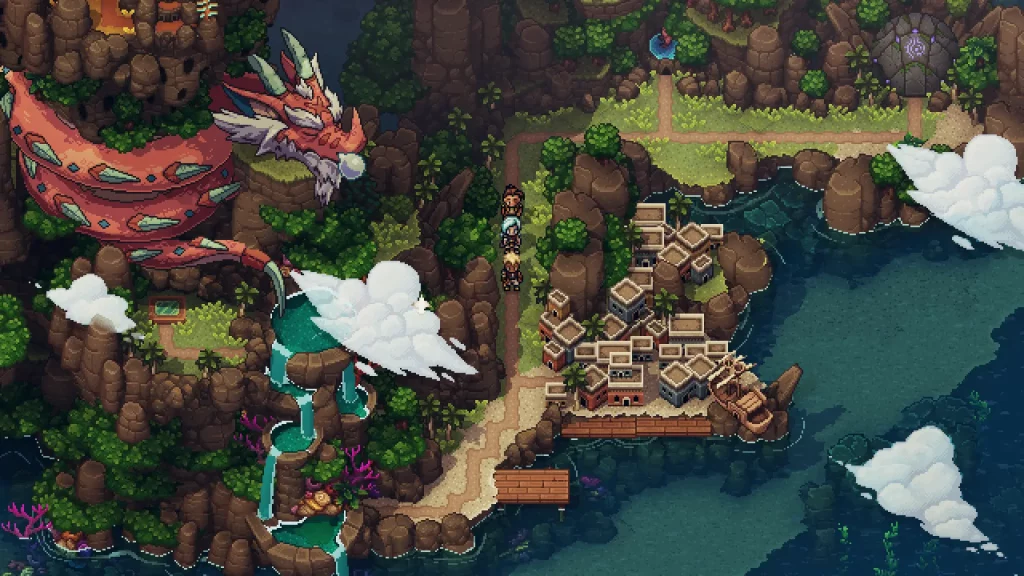
Quick side-note, if you’re enjoying this video consider giving it a thumbs up, dropping a comment, or better yet hit that subscribe button and give my tired brain a shot of dopamine. You get to see cool stuff like this and I get existential validation. Everybody wins!
Where To Play It
I played it on PS5 and an Xbox Series S with my PlayStation+ and Gamepass subscriptions, and I also played the demo on Switch. It looked equally amazing and felt the same on all three platforms, as you might expect with a retro-inspired game like this. I think I would’ve preferred to play it on my Switch, but with all the games coming out this summer, playing it on a subscription service was too good to pass up.
Cross-save is not enabled, and not only can you can not transfer a saved game from one platform to another, but you can’t even transfer from one generation to another. So if you play it on a PS4 now you won’t be able to pick up where you left off if you upgrade to a PS5.
I also played the game through Remote Play on my phone, knowing that the PlayStation Portal is on the way. I’m happy to say that as long as both devices had a strong internet connection, it played fine. I was even able to work with the delicate timing that comes with combat—although not quite as effectively as playing naturally. In other words I think I’d be fine if I had to play the entire game in remote play while my kid sits next to me watching Bluey on the big screen.
Final Thoughts
I’ll admit the game started a little slow for me, and it took several hours for the gameplay to pick up momentum. If you’re a fan 90s JRPGs, then you don’t need to be sold on this game and you’ll probably feel right at home right away. But if you’re new to this subgenre of RPGs or haven’t had a lot of experience with turn-based combat, I’m guessing it may feel a little dull for a while. By the time you hit the port town of Bright, however, the story and gameplay starts to pick up momentum and it’s just a steady climb all the way to the crazy, amazing, unforgettable end.
JRPGs are known for their epic storylines and Sea of Stars leans in and hits most of the tropes—like young protagonists, an older mentor, a plucky sidekick, world-ending doom, you get the idea. It even pokes fun at itself for some of these, and I want to point out it didn’t feel like it was derivative or it wasn’t creative, it really felt like the game was made by fans for fans of JRPGs. And what was really special, for a newcomer like me at least, is that by the end of the game I felt like one of those fans, too. I loved this game, and I give it a thumbs up.
